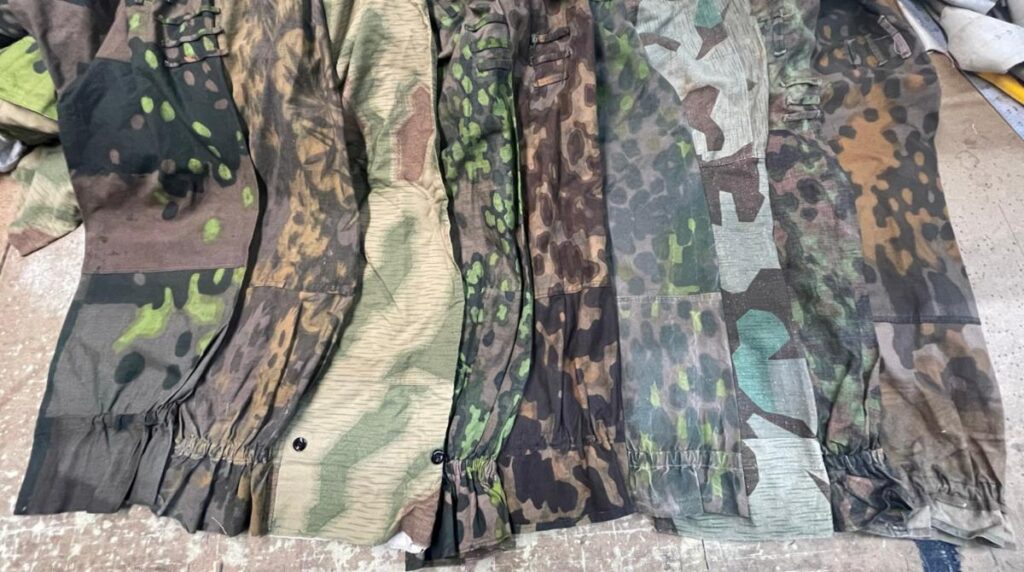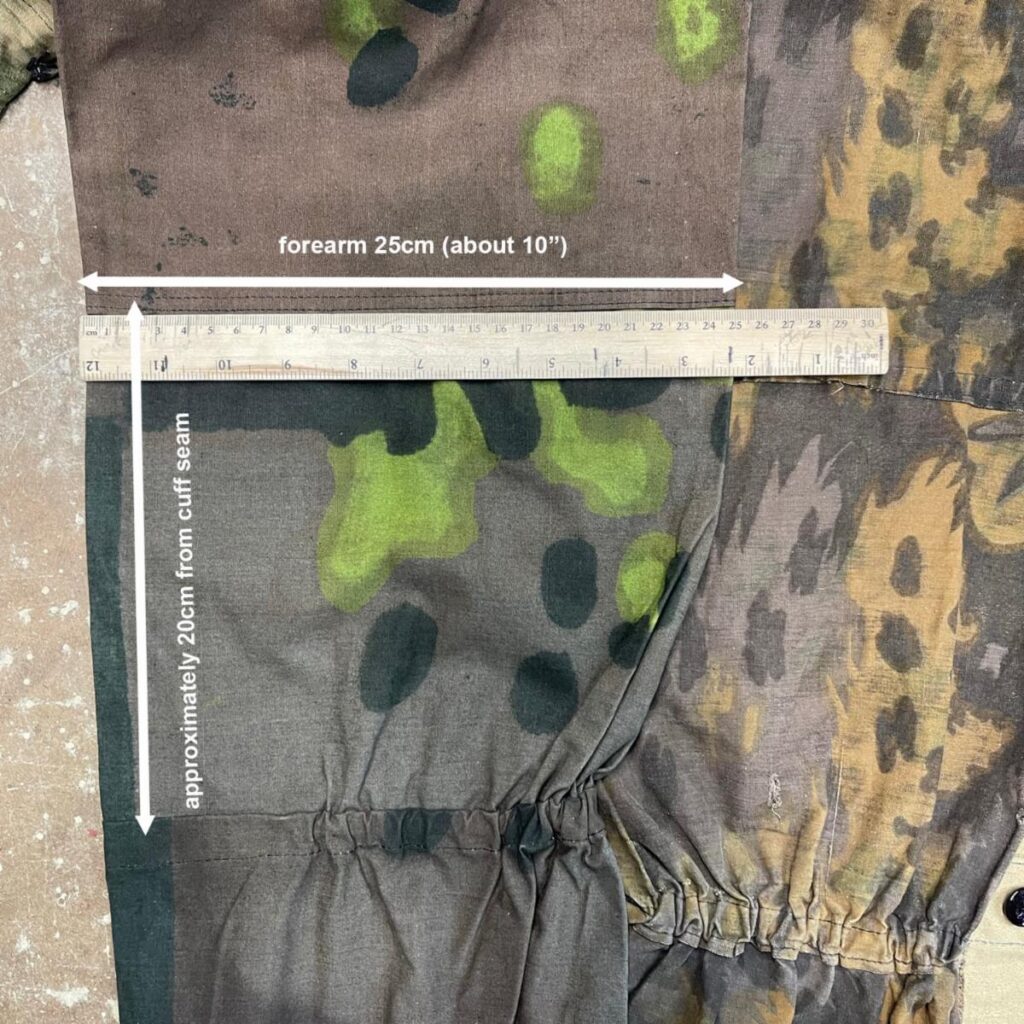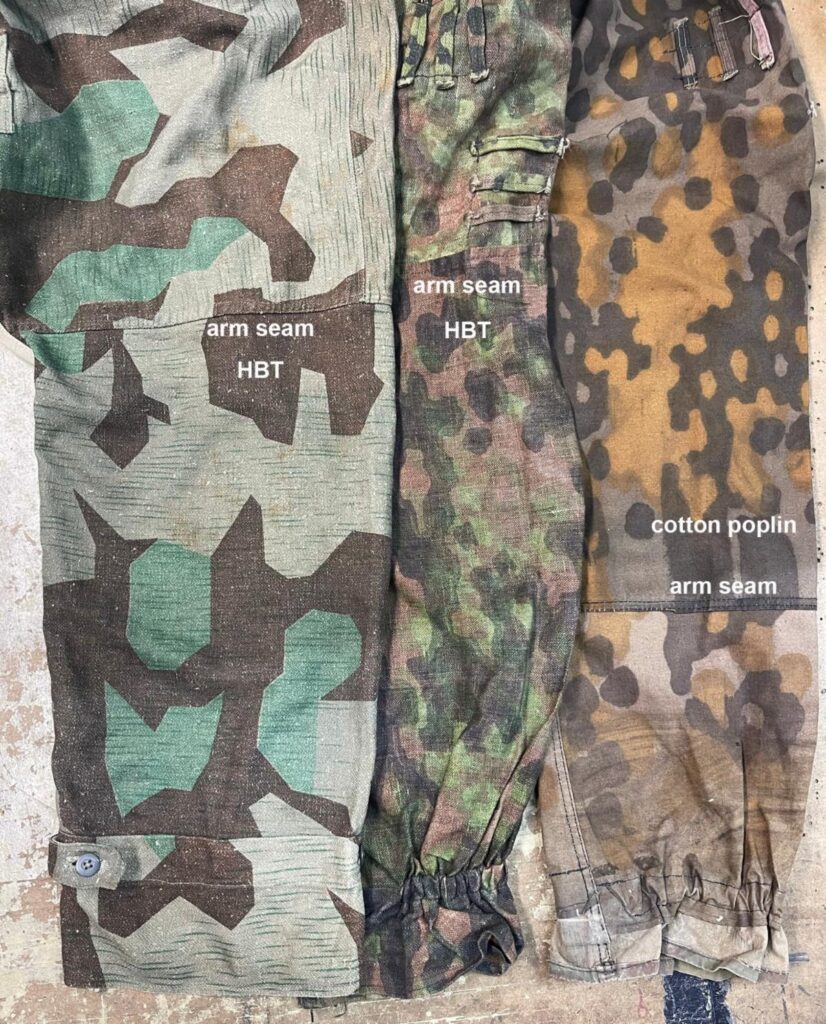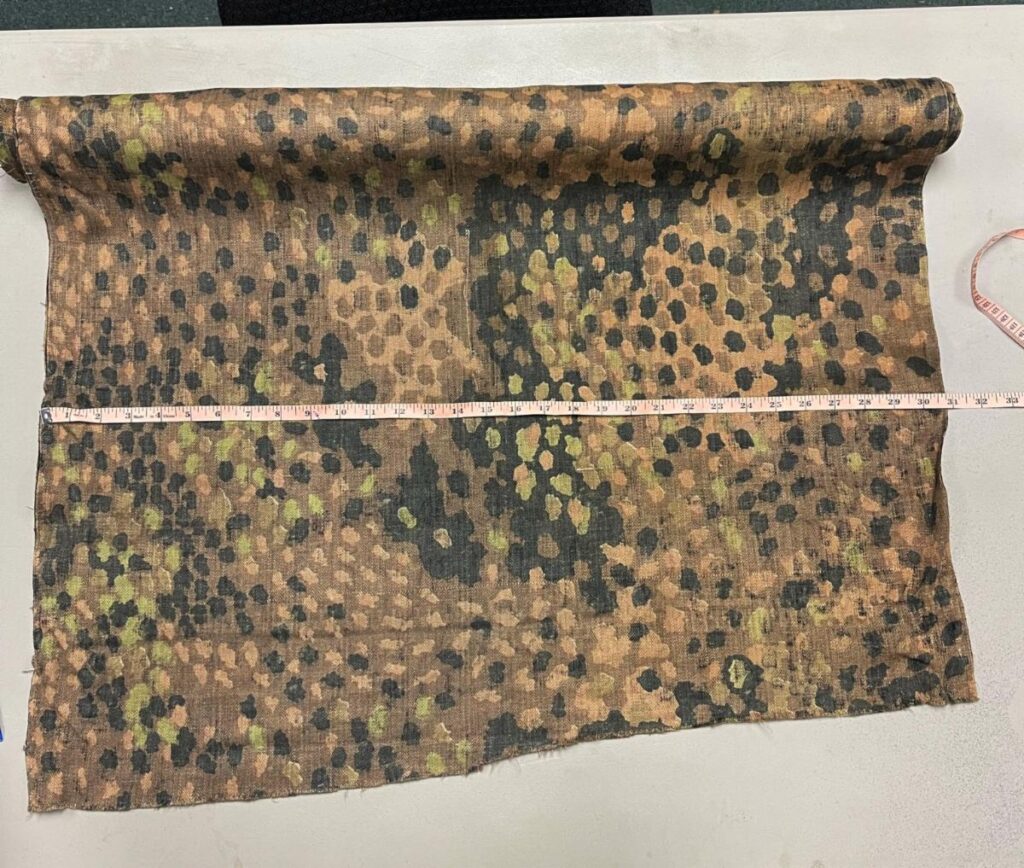
Some (or many) may shake their heads at some of these posts. Do people really care about tunic pocket angles and smock sleeve diameters? Yes, there is a pretty diehard group of uniform enthusiasts who get amped up over such things. Is this only in regard to German militaria? Not really. There are niches like this in the world of GI stuff as well.
German camouflage is extremely popular and much of the information regarding it on the internet is interesting to put it mildly. “Wishful thinking” or “their own truths” would be a better describe much of it. Occasionally giving the can a kick with some photos of originals and tape measures is informative and good sport to boot.
Smock sleeves
Today’s exciting fact regards the size of smock sleeves. (Get the popcorn out.) Those on most reproductions are too narrow- they’re not baggy enough.
I discovered this in the early 1990’s when I acquired an original overprint smock which I wore to countless events for the next 15 years. The first time I tried it on, the size of the sleeves stood out immediately- I had total freedom of movement and they did not pull at all. Even with a greatcoat on.
At 5’10”, 190lbs I was a bit larger than the average guy in 1943, but the smock was totally comfortable with room to spare. I had what were considered the best reproduction smocks at that time (today as well) and none had sleeves as baggy or long. I knew the manufacturer and asked repeatedly for a repro with sleeves like the original but that went nowhere. It drove me nuts.
Over the years, both due to us manufacturing such things, as well as my own nerdy obsessions, I have measured just about every original smock I have come in contact with. At one point I started a spreadsheet, but there was so little deviation I decided that was pointless. I’ve owned about 30 smocks since then, so adding in the others that were measured at shows and in collections I’m likely over 100 by now. They’re very consistent.

Poplin vs. HBT
Whether M38, M40, M42, Splinter or Marsh, the circumference of the arms on originals is 50cm. When measured flat, that’s 25cm or about 10 inches (9.84 to be exact).
Most of the smocks were Waffen-SS poplin types so I was checking this at the forearm seam. For HBT smocks, that point is about 20cm above the cuff seam. Once in a while, one sleeve (rarely both) will be a bit less, but I think 9.25″ was the smallest, and that can be chalked up to really sloppy sewing or cutting.
I currently have 11 original smocks and every one of their 22 sleeves are almost exactly 25cm wide.
For comparison, original Feldblusen sleeves run 7-9 inches (depending on size) measured in the same location.
Most reproductions are 8-9 inches, occasionally less. Yes, one can very much tell when they try one on. Regarding reproductions, the worst offenders are the ones from ebay that come in 5 sizes. However, it is very rare to find any reproductions that are as large as the originals- even the “creme de la creme” of repro pullovers are usually smaller. Either they copied a copy (that was “just like an original”) or perhaps they had a real one, but the pattern maker was incompetent.

Why do some smocks have sleeve seams at the shoulder? Simple. Those are almost always the ones made from HBT (Drillich) fabric. That cloth was much narrower making it impossible to put the seam at the forearm.

Drillich cloth width:
The pieces of original HBT I have measured range from 30-34 inches in width. By comparison, the cotton poplin used for Zeltbahns, Waffen-SS smocks and so forth was 53-55 inches in width.
Assumedly with every loom in central Europe making fabric for the German military at this time, a bit of variation is understandable. Did wide Drillich exist? Hell if I know. Ask Elon for a ride in his time machine and let us know.